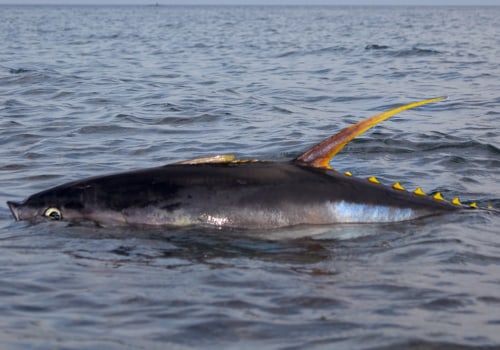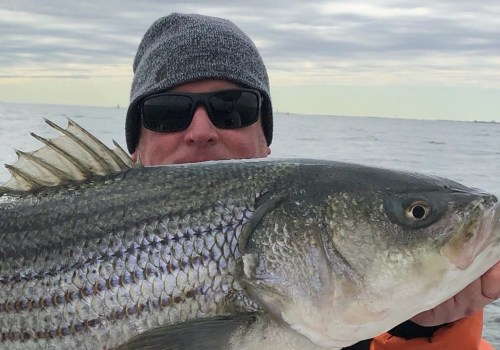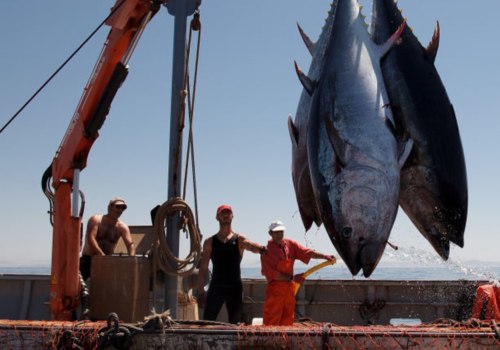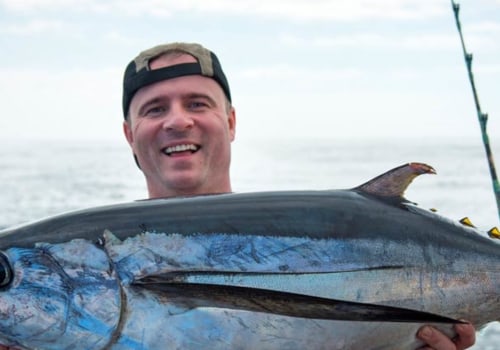The California coast, and more specifically San Diego, is one of the best places to fish for bluefin tuna in the Pacific. San Diego has earned the title of World Tuna Capital for the incredible tuna fishing opportunities it produces every year, 6 days ago. In my opinion, it is the most difficult fish to catch and the one with the best flavor to roam the oceans. To catch bluefin tuna you need a seaworthy boat, the best equipment, a competent fisherman, good electronics and a lot, A LOT of fuel.
Bluefin tuna is usually caught in deeper waters and farther from the coast. In San Diego, there have been cases where bluefin tuna was caught as close as the nine-mile shore, but this is extremely rare and doesn't last long. The most successful bluefin tuna trips last several days and venture up to 250 miles from the coast for best results. Your other option is to head south, into Mexican waters, to the outer shores of Baja California, Mexico.
Not surprisingly, blue marlins are beautiful, majestic and powerful fish, sometimes weighing more than 1,000 pounds. However, another fish deserves a seat at the table: tuna. Tuna is a natural predator that has all the speed and power that a trophy fish should show. Built like a torpedo with retractable fins, bluefin tuna is a supreme predator in the North Atlantic.
Bluefin tuna is the largest species of tuna, with a routine weight of 1,000 pounds. They migrate to all oceans and can dive up to 3,000 feet, making them sometimes elusive creatures. With a lifespan of up to 40 years, bluefin tuna has enough time to become a giant. And finally, check out our definitive guide with more than 100 facts about Canada.
One of the elite species that usually breaks the 1,000-pound mark, catching a giant bluefin tuna in deep water is almost a sure break. Ask the unfortunate children who bump into fish weighing more than 800 pounds a couple of times a year in the waters of the Gulf of Mexico, a mile deep. Everyone knows that the Outer Banks of North Carolina are a great place to fish for medium to school size yellowfin tuna. In terms of equipment, the Stella 18000 or 2000 are good options for both jigging and popping, since they are combined with a strong rod such as an OTI Tuna Sniper or a Black Hole Cow Special if you can afford it.
Whether they feed on the surface or are kept 30 meters deep, hungry tuna prefer large corks or poppers. Once you book your charter and head out to sea, remember that this doesn't always guarantee bluefin tuna. There are some great spots in both, but by their very nature, bluefin tuna fishing usually involves a lot of running and shooting. The Florida Keys are home to excellent blacktuna fishing, focusing primarily on a series of deep-sea underwater mountains.
It is a feeding station for a variety of pelagic fish, but it almost always contains a good amount of blackfin tuna. Bluefin tuna and white tuna are the first to appear, following huge bait balls as they make their way across the Atlantic. One of them, a 200-pound bluefin tuna caught on a boat off Gran Canaria, in the Canary Islands, surprised me a lot. The time has come, you just dragged a giant bluefin tuna weighing more than 200 pounds down the side of the boat and you are currently taking all the garbage out of the interior of the fish warehouse.
Jason Pipe began fishing for tuna in the Canary Islands when he was 16 years old and now, almost 30 years later, he is very focused on tuna from his native waters. Calling all anglers looking for a new challenge, visit these incredible tropical destinations from around the world and enjoy a day on the water fishing for tuna. Charter fleets, between 40 and 80 pounds, make up the bread and butter of charter fleets during long, hot summers, but it's the influx of giant bluefin tuna every winter that causes blood to boil even in the cold. You won't find any elegant sport fishermen in Nova Scotia, so don't expect to have the best boat for tuna fishing.
.




Leave Message